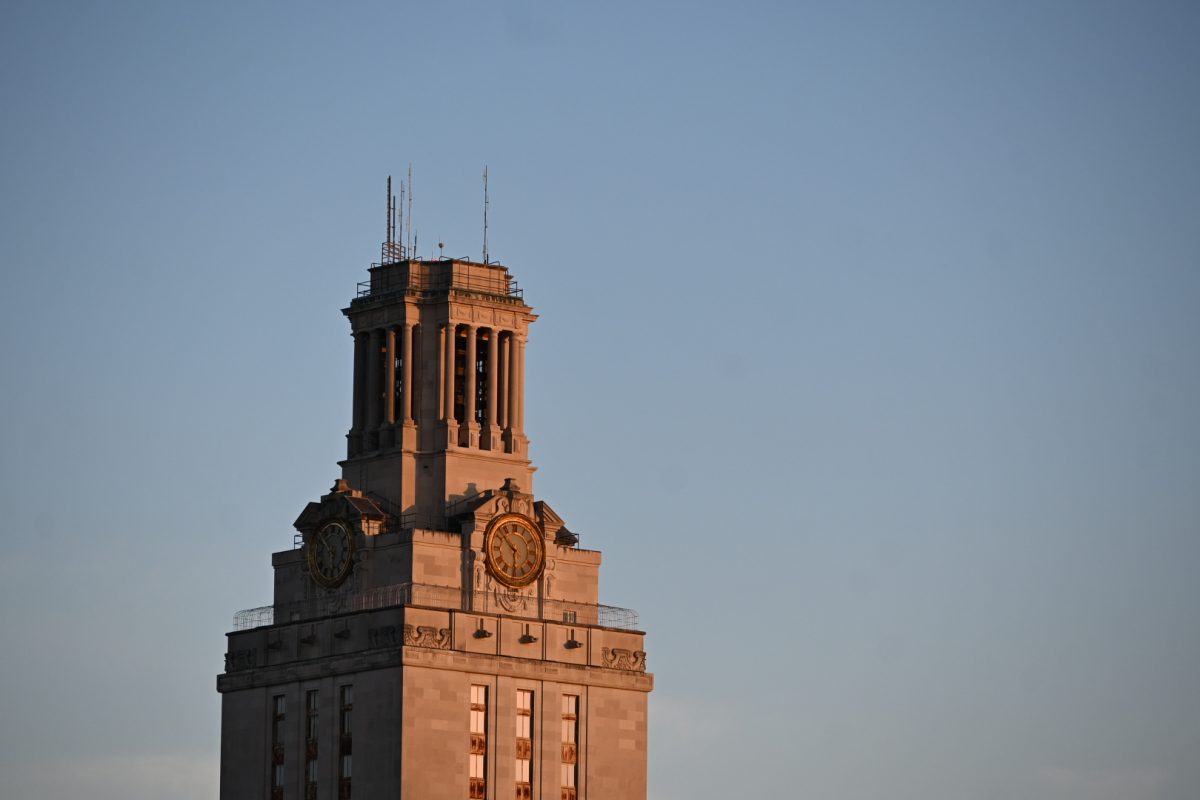Researchers at the College of Natural Sciences designed the thinnest light bulb in the world, while Cockrell School of Engineering researchers created an energy-absorbing honeycomb structure that could be used to improve safety equipment.
Researchers from Columbia University, Seoul National University, Korea Research Institute of Standards and Science and UT discovered the element graphene is able to give off light.
James Hone, a professor from Columbia University, conducted research that showed small ribbons of graphene could be heated like light bulb filaments to almost 3,000 degrees, at which point, they glow with visible light.
“This is the result of a few things: the high strength of graphene, its stability at extremely high temperatures, an interesting property whereby it becomes less conductive of heat … at higher temperatures,” Hone said in an email. “This means that small ‘hot spots’ do not leak heat too fast to the surrounding metal wire and substrate.”
The development process took about three years, from writing the paper to conducting the experiments. Yujin Cho, a physics grad student, applied varying voltages to the graphene to see what would happen.
“I measured the radiation spectrum by applying different voltages,” Cho said. “The basic idea of our paper was that by measuring the temperature and by changing the depth of the device — the distance between the graphene and the silicon — we could actually change the output light.”
Scientists in the College of Natural Sciences published their findings in Nature Nanotechnology on June 15.
Researchers at Cockrell have designed a honeycomb-inspired structure that can efficiently withstand blunt impacts. Professor Michael Haberman was a member of the team that designed the structure.
“We had the initial idea, started working on it and doing some relatively simple prototypes,” Haberman said. “A bunch of computer modeling simulations, and we sort of refined the design as we went along.”
The honeycomb structure is a result of the combined ideas of UT alumnus Tim Klatt and Professor Carolyn Seepersad’s research. From conception, the project took three years.
“Dr. Seepersad had been working with these elements for years, and Tim Klatt was the first to actually come up with the idea,” UT alumnus Dixon Correa said. “We wanted to put down these things into honeycomb configurations and see what we could get from it. My role was to look at the concept, refine it and make sure that it worked off-paper as a physical prototype.”
Klatt wanted to see if they could create a structurally sound design.
“My idea was to take all these models that I was making and stick a couple columns of these things together,” Klatt said. “Could we make a computer model on that, predict the performance and then print it out using 3-D printing, test it, and verify it?”
Seepersad said a lot of variables went into the experiment.
“One of the most recent tests we did was a drop test — an impact test,” Seepersaid said. “Basically what we did was drop a weight onto the honeycomb to simulate an impact, and then checked to see what happened to the weight.
Real-world applications for the structure include impact-absorbing helmets, car bumpers and personal protection equipment.
“The thing to point out here is that the value of the honeycomb structure is that you can make it out of anything,” Haberman said. “We happened to build this with rapid 3-D printing, because it was the easiest and fastest and least costly way to do it. But it can be done with regular plastics, it can be done with metals, it could be done with pretty much any material.”
The team at Cockrell published their findings in Integrated Materials and Manufacturing Innovation in May.
Correction: An earlier version of this article misspelled Tim Klatt's name. It has since been updated.





















